We hope that you enjoy reading and learning from this article on the Incredible Sharks of the World. These magnificent creatures have fascinated, and often terrified, mankind throughout history. Yet, just as with all creatures, no two species are exactly alike.
These animals often play pivotal roles in their habitats, thus making them a vital link in the chain of life that Nature has created. Read on, and discover some of the seemingly endless variety among these powerful denizens of the seas and oceans of the world.
Blue Shark
Blue Shark Facts
- Heading off our list of Incredible Sharks of the World is the wonderful Blue Shark, which fascinates man for a unique reason.
- This marvelous creature ranks as the only known variety of shark that experts actually call (comparatively, of course) docile. In fact, since the year 1580, reports indicate only 13 shark attacks involving the Blue Shark.
- Sadly for the animal, however, it remains one of the most widely fished sharks in any ocean. Though its flesh seems technically edible, humans rarely consume it.
- Fishermen catch 20 million individuals of this species each year, with the flesh being principally used for fishmeal.
- Despite this terrible fact, the species still does not appear to be endangered. The reason is that, thankfully, it reproduces in vast numbers.
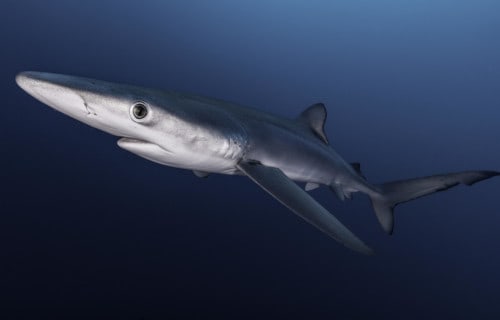
Photo: NOAA Fisheries West Coast
CCL: http://bit.ly/2UmFFF8
Blue Shark Physical Description
True to its name, the Blue Shark boasts a deep blue color on the upper body. Its sides display a lighter shade of blue, and the belly also typically shows white.
Like many related species, the animal also displays moderate sexual dimorphism, with the females being slightly larger than the males.
The male Blue Shark attains lengths of up to 9.3 ft (2.8 m), while the somewhat larger female only reaches 10.8 ft (3.3 m).
Not only do the females grow larger in this amazing species, they literally have thicker skin (3 times as thick to be exact).
- Kingdom: Animalia
- Phylum: Chordata
- Class: Chondrichthyes
- Order: Carcharhiniformes
- Family: Carcharhinidae
- Genus: Prionace
- Species: P. glauca
Blue Shark Distribution, Habitat, and Ecology
Most notably, the Blue Shark lives in most temperate and tropical regions, usually in deep water, at depths of as much as 1,150 ft (350 m).
This remarkable ocean creature also migrates enormous distances, sometimes as far as from New England, in the United States, to South America.
The animal also evolved a unique mating ritual in which the male repeatedly bites the female. This serves as the reason she evolved thicker skin for self-defense.
It evolved as a viviparous creature, so often gives birth to as many as 100 live young at one time. Its precise lifespan remains undetermined but estimates put it at 20 years.
This species feeds primarily on a variety of squid, but will also prey on other invertebrates such as lobsters, shrimp, cuttlefish, and crabs. Larger types of sharks form its only known natural predators.
Spinner Shark
Spinner Shark Facts
- Next on our list of Incredible Sharks of the World is the acrobatic Spinner Shark, a remarkable creature.
- This species names a medium-sized species of requiem shark that has become quite popular with spectators for its acrobatics.
- Its common name comes from its unique feeding strategy since the species typically feed on schools of small fish. When it attacks its prey, the Spinner Shark swims vertically through the school with a spinning motion.
- The species has also become popular for its tendency to leap completely out of the water at times which makes for a really beautiful sight.
- Relative to its size, this amazing animal represents one of the swiftest and most gregarious predators in any ocean. The fish does not typically pose a threat to humans unless the individual is in a feeding frenzy, however.
- The IUCN currently lists the species Near Threatened, and may soon raise that to Threatened.
Spinner Shark Physical Description
The adult Spinner Shark sometimes attains a length of as much as 10 ft (3 m). However, roughly 6.4 ft (2 m) serves as a more common length.
Also, an average weight equals about 123 lb (56 kg) for adults. The body shape stays extremely slim and streamlined, and the rather distinctive snout grows elongated and pointed.
The upper teeth are highly serrated while the lower teeth are smooth. The eyes remain rather small and circular in shape.
The body of the Spinner Shark is covered with a dense layer of dermal denticles. The color pattern is typically gray above, and white below. The gill slits grow comparatively long for a shark of its size.
- Kingdom: Animalia
- Phylum: Chordata
- Class: Chondrichthyes
- Order: Carcharhiniformes
- Family: Carcharhinidae
- Genus: Carcharhinus
- Species: C. brevipinna
Spinner Shark Distribution, Habitat, and Ecology
The amazing Spinner Shark most commonly inhabits specific regions within most of the world’s oceans.
In the Atlantic, it lives on the east coast of the United States to the northern Gulf of Mexico as well as from northern Africa to Namibia.
In the Indian Ocean, the Spinner Shark inhabits the area from South Africa to Madagascar and Sumatra, and from Japan to the Philippines in the Pacific.
It also prefers to inhabit the shallower depths of the ocean or between the surface and depths of no more than 330 ft (100 m). The Spinner Shark even inhabits the shallow waters up to and including the surf of a shoreline.
Horn Shark
Horn Shark Facts
- The next amazing creature on our list of Incredible Sharks of the World is the fascinating species appropriately known as the Horn Shark.
- For wholly understandable reasons, this intriguing product of Nature and evolution bears the simple yet descriptive common name tht it does. The official scientific name for it, however, as is so often the case, doesn’t roll of the tongue quite so easily.
- That’s due to the fact that professional researchers know it best by the term of Heterodontus francisci. It originally bore another name, though. The respected French biologist, Charles Frederic Girard made the first formal recognition of it as a species.
- This scientifically noteworthy event occurred in the year 1855. At that time, he named it Cestracion francisci. That name, however, subsequently changed several times. The assignment of the official moniker it bears now actually took place many years later.
- For the moment, the IUCN has no official listing for the creature on its Red List of Threatened Species. It’s presently formally noted as Data Deficient. Ongoing research, though, will hopefully redress the lamentable lack of information in this area.
- Thankfully, the Horn Shark isn’t intentionally fished, either commercially or recreationally. Small numbers do sometimes fall victim accidental bycatch, however. The shark is nevertheless sometimes used as fishmeal in parts of its endemic range.
- The remarkable fish nonetheless does face some potential threats to its continued existence, though. Like most species around the world, it’s potentially at risk due to climate change. Because of the nature of its range, habitat loss also poses a danger.
Horn Shark Physical Description
Although the amazing Horn Shark certainly impresses those who encounter it, it doesn’t do so due to sheer size. That’s because this particular animal ranks as moderately small for its kind. It nonetheless possesses its own share of impressive physical characteristics.
This fascinating creature, like most of its kindred, manifests a small degree of the physiological characteristic of sexual dimorphism. In its case, again following the typical pattern of its genus, this manifests in terms of a difference in size, though this remains small.
More specifically, the females generally attain a slightly greater length than their male counterparts. The females further reach an average length of about 3.3 ft (1 m). Exceptional specimens do occur, however, sometimes measuring as much as 3.9 ft (1.2 m).
Forming a variety of what’s known as a bullhead shark, the animal has a short, relatively wide head. It also displays a blunt snout, with pronounced ridges over its eyes. The mouth develops as small and somewhat curved, with strong furrows appearing at the corners.
Intriguingly, the body of the Horn Shark most commonly has a strongly cylindrical form to it. This body further displays two high dorsal fins, with strong, sharp spines. Color further varies significantly between individuals, though some patterns naturally predominate.
These typically consist of yellowish on the bottom, and shades of brown or gray otherwise. Numerous small dark spots also dot the body at random. These markings, however, often disappear as it ages. Yet another small patch of dark spots appears below both of its eyes.
- Kingdom: Animalia
- Phylum: Chordata
- Class: Chondrichthyes
- Order: Heterodontiformes
- Family: Heterodontidae
- Genus: Heterodontus
- Species: H. francisci
Horn Shark Distribution, Habitat, and Ecology
Regrettably, the fabulous Horn Shark inhabits a comparatively restricted portion of the oceans of the world. That’s due to the fact that it only appears in a small portion of the eastern Pacific Ocean. That’s the continental shelf, off the east coast of North America.
Even there, though, this marvel only lives in a limited range, to the knowledge of researchers. The bullhead shark appears to live in a range that begins off the coast of California, in the United States. From there, this further extends to the Gulf of California, in Mexico.
As a general rule, the species lives in extremely shallow waters in its range. Throughout most of the year, it typically appears ata depths ranging from 6.6 – 36.1 ft (2 – 11 m). During the winter months, however, the anaimal migrates to depths greater than 98 ft (30 m).
It most frequently makes its home in regions of either algae beds or complex rocky reefs. Some specimens, though, have been spotted in caves, at depths of up to 660 ft (200 m) in winter. It also often makes use of moderately large pits dug out by various species of ray.
Individuals of this remarkable species further remain strongly benthic in nature. As a result of this trait, most specimens rarely move more than 6.6 ft (2 m) from the ocean floor. Interestingly, as a general principle, individuals migrate to shallower waters as they age.
The Horn Shark only swims sporadically, as a rule. Although small groups have been spotted, it most commonly lives a highly solitary life. The majority of its diet consists of hard-shelled mollusks and crustaceans. It also eats small quantities of sea stars and peanut worms.
Bull Shark
Bull Shark Facts
- Next on our list of Incredible Sharks of the World is the amazing Bull Shark, well-known among its peers.
- Firstly, experts best know the appropriately named shark for its aggressive nature. In fact, this species appears responsible for the majority of shark attacks worldwide.
- It also is one of the best-known types of requiem shark. This ocean dweller is also highly adaptable to environmental conditions.
- In fact, it is one of the few saltwater sharks actually capable of living in freshwater for extended periods of time.
- It is also deceptively powerful. Relative to body mass, this apex predator has the most powerful bite of any known cartilaginous fish.
- Sadly, for a variety of reasons, the IUCN now lists this magnificent species as Near Threatened.
Bull Shark Physical Description
Though not overly large, the body of the Bull Shark is relatively stout in design. A slight degree of sexual dimorphism is also present in this variety of Requiem Shark.
The females average about 7.9 ft (2.4 m) in length and about 290 lb (130 kg) in weight. The males grow slightly smaller in size and commonly attain a length of roughly 7.4 ft (2.25 m), and weight of 210 lb (95 kg).
Its coloring is also typically a light gray on top, and white on the underbelly. This is an evolutionary adaptation not shared by most sharks and which provides it with natural camouflage.
- Kingdom: Animalia
- Phylum: Chordata
- Class: Chondrichthyes
- Order: Carcharhiniformes
- Family: Carcharhinidae
- Genus: Carcharhinus
- Species: C. leucas
Bull Shark Distribution, Habitat, and Ecology
The Bull Shark is common throughout the warm oceans of the world. Unfortunately for humans, it also lives in many rivers and lakes. In the ocean, individuals prefer quite shallow areas near coastlines and rarely inhabit depths of more than 490 ft (150 m).
Some individuals have also even been spotted as far inland as 2,500 mi (4,000 km) along the length of the Amazon River.
As with other sharks, the Bull Shark is an opportunistic hunter. It typically hunts alone, however. Its principal prey is bony fish, but it will also consume turtles, dolphins, birds, terrestrial mammals, and even other small sharks.
This magnificent animal represents an apex predator within its habitat and has few natural predators itself. Its principal threats come from commercial fishing, however.
Bonnethead Shark
Bonnethead Shark Facts
- Placing fifth on our list of Incredible Sharks of the Worldcomes the remarkable species known by the unusual name of the Bonnethead Shark.
- The distinctive term for this fish serves as the most frequently used of several common names for this fascinating marine creature. It also goes by the somewhat inventive alternate name of the shovelhead, as well as that of the bonnet shark.
- The scientific name for it, meanwhile, is comparatively simple, as technical terms goes. That’s because it bears the official name of the Sphyrna tiburo. By either of these terms, though, it represents yet another variety of hammerhead shark.
- The first known scientific recognition of it as a separate and distinct species took place long ago. More specifically, it happened in the year 1758. That further resulted from the research of the renowned Swedish zoologist and botanist, Carl Linnaeus.
- Its population appears to be stable in only certain portions of its range. Regrettably, the amazing Bonnethead Shark appears to be suffering from significantly reduced numbers in other regions, however. It’s been heavily targeted in fishing practices.
- This unfortunate fact further holds true in several portions of its natural range. Due to this overall decline, the IUCN presently lists the marine species as Endangered. This lamentable status is reflected in the organization’s Red List of Threatened Species.
- It accounts for as much as half of all shark catches in its range. The fish also suffers from other dangers as well. Habitat degradation and outright loss form an obvious threat, of course. Nevertheless, climate change must also now be considered a threat.
Bonnethead Shark Physical Description
The fascinating Bonnethead Shark impresses those who learn of it for reasons other that sheer size. That’s due to the simple fact that it’s a small species. In point of fact, this marvel of Nature forms the smallest of all currently known varieties of hammerhead shark.
The creature also displays a slight degree of the physiological characteristic of sexual dimorphism. In this instance, that trait manifests itself in terms of physical size. More precisely, the females of the species tend to attain slightly greater lengths than the males.
Overall, however, individuals of this hammerhead shark variety reach an average body length of roughly 2 – 3 ft (0.61 – 0.91 m). Exceptional specimens do naturally occur, though. Due to this, the largest specimen measured to date reached about 5 ft (1.5 m) in length.
Most frequently, the upper portion of the body of the Bonnethead Shark presents a dull grayish-brown color. The underside, meanwhile, usually develops as markedly lighter in coloring. It also develops a smooth, broad, shovel-like head, hence the common name.
- Kingdom: Animalia
- Phylum: Chordata
- Class: Chondrichthyes
- Order: Carcharhiniformes
- Family: Sphyrnidae
- Genus: Sphyrna
- Species: S. tiburo
Bonnethead Shark Distribution, Habitat, and Ecology
The intriguing Bonnethead Shark inhabits a relatively small portion of the oceans of the world. Not only that, but its range also happens to be highly specialized. That’s because, throughout its range, it only appears in a comparatively narrow strip along the shoreline.
More precisely, it primarily appears along the east and west coasts of the United States, in North America. To the east, however, individuals live as far south as the Gulf of Mexico and Brazil, in South America. The northern part of its range reaches as far as New England.
In the west, meanwhile, a few populations appear as far south as the waters near the country of Ecuador. To the north, in the Pacific Ocean, though, this shark makes appearances as far up the coast as southern California. Groupings further appear sporadically.
This species also migrates with the seasons in both parts of its range. As a result of this, individuals generally move southward as the water temperature changes. This shark typically prefers to inhabit regions with water temperatures over 70 F (21 C).
It also displays a fondness for specific types of habitat. These mainly include regions of seagrass, areas with very muddy or sandy bottoms. It will also, however, sometimes live in shallow bays and estuaries. In these regions, though, it prefers the presence of seagrass.
Most commonly, the Bonnethead Shark travels in small groups. These generally number no more than 1 individuals, except during migrations. At this time, they may be found in groups of hundreds or even thousands. Females prefer very shallow water for birthing.
This species stands apart from all other known sharks in one surprising way. This occurs despite being the smallest of its kind. That’s because all other known sharks feed entirely as carnivores. This species, though, is an omnivore, occasionally eating seagrass.
Great White Shark
Great White Shark Facts
- Next, on our list of Incredible Sharks of the World, the amazing Great White Shark is likely the best known of all.
- Firstly, this astonishing creature represents a species of large shark inhabiting nearly all oceans. It also remains one of the oceans primary apex predators.
- This incredibly efficient hunter also has no known predators of its own, except for rare attacks by orcas when other, easier prey cannot be found.
- It also exemplifies a fast and far-ranging hunter. It can reach speeds of as much as 35 mph (56 kph) and depths of as much as 3,900 ft (1,200 m).
- For a variety of reasons, the IUCN also currently lists this terrifying, but nonetheless majestic creature as Vulnerable.
Great White Shark Physical Description
The rather impressive Great White Shark remains the most easily recognizable of the Incredible Sharks of the World.
It attains a maximum known length of 20 ft (6 m) and weighs as much as roughly 5,000 pounds (2,268 kg). Reports of larger individuals occur but remain undocumented.
Most commonly it appears grayish in color on the top part of its body and white underneath. Like many species of sharks, the Great White has multiple rows of teeth.
Like all sharks, it also possesses a special sensory organ which allows it to detect the electromagnetic fields generated by the movement of living animals.
In this species, this sense seems to be rather especially acute, allowing it to detect a field of half a billionth volt. This represents less than that generated by the beating of a human heart.
- Kingdom: Animalia
- Phylum: Chordata
- Class: Chondrichthyes
- Order: Lamniformes
- Family: Lamnidae
- Genus: Carcharodon
- Species: C. carcharias
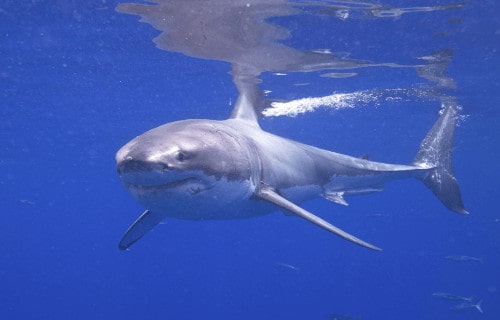
CCL: https://bit.ly/1ryPA8o
Great White Shark Distribution, Habitat, and Ecology
The astonishing Great White Shark also inhabits virtually all temperate and tropical waters. It most commonly appears in coastal and offshore areas, however, at depths of as much as 1000 ft (300 m).
Yet, this mesmerizing hunter also often hunts at far greater depths in the open ocean.
The greatest known concentration of its numbers occurs in the waters off the coast of South Africa, in Africa.
Its lifespan also averages 25-30 years. It remains quite famous for being a highly aggressive predator and feeding on a wide variety of prey. This includes tuna, dolphins, seals, sea turtles, sea otters, and even marine birds.
Thresher Shark
Thresher Shark Facts
- This astonishing entry on our list of Incredible Sharks of the World goes by the name of he Thresher Shark.
- This amazing type of shark has a distinctly unique physical appearance that makes it easily recognizable. This holds true because the caudal fin grows to lengths proportionately far greater than other species of shark. In fact, it often attains virtually the same length as the body itself.
- Marine biologists suspect the possibility of the existence of a fourth species of Thresher Shark. Yet they remain uncertain, due to a lack of sufficient evidence. So far only one specimen has been discovered, thus scientists cannot officially confirm the existence of a fourth species.
- As members of the Lamniforme order, its body temperature remains higher than the water around it. This separates the creature from the great majority of other sharks. Finally, the three species in this genus include the Pelagic Thresher, the Bigeye Thresher, and the Common Thresher.
- Most notably, the IUCN currently lists all three as Vulnerable.
Thresher Shark Physical Description
While the three known distinct species of Thresher Shark vary slightly in appearance, the general appearance remains the same.
The different species range in maximum length from 10 ft (3 m) to 20 ft (6.1 m). Maximum weights for the different species vary quite significantly, with the largest reaching 1,100 lb (500 kg).
Color also varies and includes gray, brown, blue, and even purplish. While the caudal fin grows large, the head remains relatively short, and the nose presents as somewhat cone-shaped.
Meanwhile, both the mouth and teeth remain rather small. Yet the oversized caudal fin ranks as the most noteworthy physical characteristic of the species.
- Kingdom: Animalia
- Phylum: Chordata
- Class: Chondrichthyes
- Order: Lamniformes
- Family: Alopiidae
- Genus: Alopias
Thresher Shark Distribution, Habitat, and Ecology
Most notably, the Thresher Shark inhabits all temperate and tropical oceans. Yet within that range, individuals generally only inhabit a specific portion of the ocean.
Only occasionally will it venture into shallow waters near shore, usually in search of prey. That’s because the animal generally inhabits the pelagic zone of its area of ocean. Regions far from shore, and extending no deeper than 1,600 ft (500 m) comprise its typical habitat.
This species also primarily preys on such creatures as bluefish, squid, mackerel, and cuttlefish. Yet individuals will occasionally consume crustaceans and even seabirds. These often employ their enormous caudal fin to stun the prey by slapping the surface of the water.
The fish lives a primarily solitary life, yet will sometimes form small groups for hunting, however.
Cookiecutter Shark
Cookiecutter Shark Facts
- The next remarkable species on our list of Incredible Sharks of the World is the impressive Cookiecutter Shark.
- This astounding animal is a small but quite remarkable variety of dogfish shark, with some unique characteristics.
- The name of this shark comes from its way of feeding. Individuals actually gouge small round plugs of flesh out of the prey. This wound appears as if cut by a cookie cutter, hence the name.
- Due to its wide distribution, the IUCN lists it as a Species of Least Concern. It also has no commercial value to fishermen and thankfully does not seem to be overly susceptible to commercial fishing methods.
Cookiecutter Shark Physical Description
The Cookiecutter Shark remains an extremely small species of shark. The maximum recorded length of any individual was 22 in (56 cm).
It also has an elongated body, with a bulbous snout. The eyes grow rather large and sit more forward than among most types of sharks.
The upper teeth develop small and narrow, and the lower teeth grow rather larger, wider, and knife-like.
This animal is also predominantly a chocolate brown in color. Additionally, the shark also possesses photophores covering most of its underside which create a bright green glow.
- Kingdom: Animalia
- Phylum: Chordata
- Class: Chondrichthyes
- Order: Squaliformes
- Family: Dalatiidae
- Genus: Isistius
- Species: I. brasiliensis
Cookiecutter Shark Distribution, Habitat, and Ecology
Though it lives in all warm waters, the Cookiecutter Shark is most common in waters where the temperature is between 64-79 F (18-26C). In warmer years, this sometimes extends its range as far as California, in the United States, in North America.
Individuals also live as extremely deep dwellers. During the day most are found at depths of as much as 2.3 mi (3.7 km). At night most rise closer to the surface, yet typically remain below 280 ft (85 m). However, some will occasionally rise all the way to the surface.
Attacks on humans are rare but do occur, however. The shark preys upon virtually any creature, although smaller prey it swallows whole. Larger victims suffer the circular wounds from which its common name derives.
Greenland Shark
Greenland Shark Facts
- The ninth entry on our list of Incredible Sharks of the World is the mind-boggling species known as the Greenland Shark.
- This astounding fish is an extremely large species of shark endemic to a rather harsh range. In fact, its range reaches the farthest north of any known type of shark.
- The species also evolved numerous biological adaptations. As the only true sub-arctic shark, many of these adaptations occurred due to its environment.
- This amazing animal remains closely related to the Pacific Sleeper Shark and also holds the unique distinction of possessing the most highly poisonous flesh of any known species of shark.
- In addition, this creature is also the longest-lived of all known vertebrates, with some individuals living for up to 400 years.
Greenland Shark Physical Description
The Greenland Shark is one of the largest existing varieties of shark. Individuals attain an average length of as much as 21 ft (6.4 m) with weights reaching an average of 2,200 lb (1,000 kg).
Exceptional individuals, however, reach up to 24 ft (7.3 m) in length, and 3,100 lb (1,400 kg). Displaying moderate sexual dimorphism, the males of this species generally stay smaller than the females.
The species possesses a short, rounded snout, small eyes, and comparatively small fins. Its coloring ranges from pale gray to black or brown, and some individuals display streaks or spots on the back.
- Kingdom: Animalia
- Phylum: Chordata
- Class: Chondrichthyes
- Order: Squaliformes
- Family: Somniosidae
- Genus: Somniosus
- Species: S. macrocephalus
Greenland Shark Distribution, Habitat, and Ecology
The incredible Greenland Shark inhabits most of the waters of the North Atlantic Ocean. Its numbers appear to be greatest in the regions of Greenland, Canada, and Iceland, however.
Within its environment, the shark is an apex predator which predominantly feeds upon small fish. It will also sometimes consume marine mammals, such as seals.
Yet this remains rather rare as the shark is quite lethargic, with a maximum registered speed of only 1.6 mph (2.6 kph). It will also feed on carrion when the opportunity presents itself.
Some individuals do occasionally come to the surface, but generally, prefer deep water – even as deep as 7,200 ft (2,200 m).
Goblin Shark
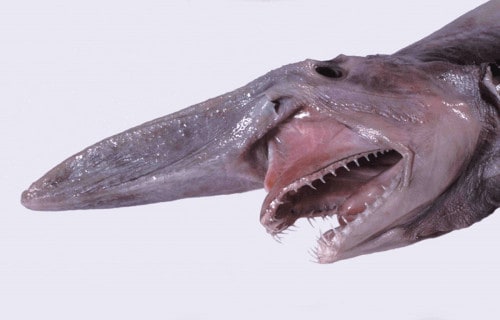
Photo: Dianne Bray / Museum Victoria
CCL: https://bit.ly/2LUxVaG
Goblin Shark Facts
- And the next, but certainly not least, entry on our list of Incredible Sharks of the World is the bizarre-seeming Goblin Shark.
- This truly remarkable creature represents an extremely rare species of deep-sea shark. Its most distinctive feature also remains the unique shape of its head and teeth.
- Very little reliable information exists concerning this astonishing creature, primarily found in the waters of Asia, however. Yet what data does exist continues to amaze researchers.
- Interestingly enough, based on the ages of observed specimens and the depths at which these were found, it appears that the older sharks prefer to inhabit deeper waters than the younger individuals.
- In addition, the strange pinkish hue of its skin does not derive from pigmentation. Rather, it occurs due to the fact that the outer layer of its skin is transparent, allowing one to view the oxygenated blood flowing through its veins.
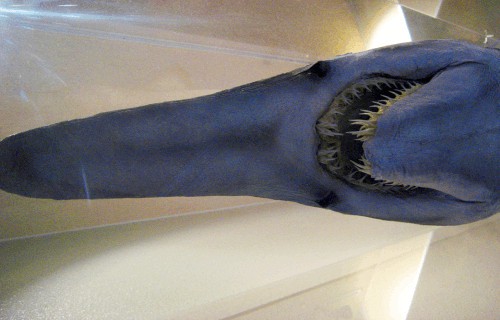
CCL: https://bit.ly/1jxQJMa
Goblin Shark Physical Decsription
The highly unusual Goblin Shark averages roughly 10 ft (3.1 m) in length, yet a few exceptional specimens reach 11 ft (3.5 m).
This data remains questionable to most researchers, however, since one apparently exceptional specimen reached a length of 20 ft (6.2 m).
Most notably, the odd structure of its teeth and snout remain its most distinctive features. The snout develops rather elongated and quite flattened, which gives the snout a blade-like appearance.
The teeth also develop quite long, slender, and extremely sharp. Ironically, the jaws remain relatively soft and delicate, however.
- Kingdom: Animalia
- Phylum: Chordata
- Class: Chondrichthyes
- Order: Lamniformes
- Family: Mitsukurinidae
- Genus: Mitsukurina
- Species: M. owstoni
Goblin Shark Distribution, Habitat, and Ecology
The Goblin Shark appears to be present throughout the oceans of the world, but most commonly lives in the waters near Japan. Though it appears to be quite rare, its numbers seem to be stable, thus the IUCN currently lists it as a Species of Least Concern.
It inhabits depths of 130 – 3,940 ft (40 m to 1,200 m), yet the majority of individuals either seen or captured have been caught at depths of 200 – 920 ft (60 m to 280 m).
Its exact diet remains undetermined, yet it appears to be an opportunistic feeder, taking any prey of appropriate size native to the area it inhabits.
To date, only about 45 individuals have ever been observed. So, the fact that scientists have little information about this creature occurs because of its rarity. Also due to this fact, few quality photos of live specimens exist.
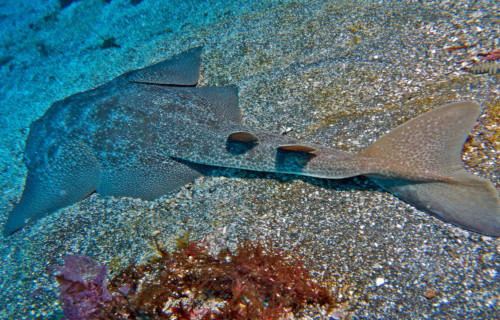
CCL: https://bit.ly/2stZRg8
- The eleventh species in our listing of Incredible Sharks of the World is the truly fascinating Japanese Angelshark.
- Most notably, the fascinating creature represents a particular species of angelshark with a very specific habitat range. Though of a moderate size, it rarely forms a danger to humans. That’s because it rarely becomes aggressive to humans unless provoked.
- Further, the Dutch ichthyologist Pieter Bleeker first described this animal as a separate species in 1858. Evidence indicates that the species developed around 100 million years ago. However, like many creatures, it now finds itself facing the danger of potential extinction.
- This holds true due to the fact that the actions of humans significantly reduced the population of the once plentiful animal. It remains a popular target for both private and commercial fishing. Commercial fishermen catch it both for its meat and as a source of a leather-like material known as shagreen.
- Because of this ongoing activity, along with its reduced numbers, the IUCN now lists it as Vulnerable. However, it also faces other serious threats to its continued existence. Combined with its reduced population, climate change and habitat loss now leave its continued survival in doubt.
Japanese Angelshark
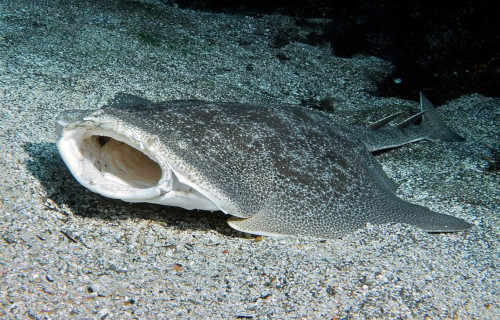
CCL: https://bit.ly/2Ld1Trz
Japanese Angelshark Physical Description
First of all, the remarkable and fascinating Japanese Angelshark represents a moderate to small variety of shark. Also, like the majority of related species, this awesome creature displays no noticeable degree of sexual dimorphism.
Additionally, mature individuals attain radically different maximum lengths. That’s because studied adults range in overall size from 4.9 – 8.2 ft (1.5 – 2.5 m). Also, as can easily be seen, the creature has a highly flattened body shape.
Its upper surface displays various shades of brown, running from light to dark. It also has a thick pattern of roughly square-shaped dark spots. These gradually become smaller as they approach the outside edges of the upper body. Meanwhile, the lower surface of the animal is white with dark blotches.
It also has several very distinctive features. Firstly, both its pectoral and pelvic fins develop as greatly enlarged. Secondly, the widely spaced eyes have a distinctly oval shape. Finally, this amazing creature has a full 10 rows of teeth in its highly widened mouth.
- Kingdom: Animalia
- Phylum: Chordata
- Class: Chondrichthyes
- Order: Squatiniformes
- Family: Squatinidae
- Genus: Squatina
- Species: S. japonica

CCL: https://bit.ly/2Ld1Trz
Japanese Angelshark Distribution, Habitat, and Ecology
As its common name suggests, the fabulous Japanese Angelshark appears in the waters around Japan, in Asia. However, its endemic range actually includes part of the northern Pacific Ocean. This extends from Japan to Taiwan. That range includes the Yellow Sea, the Sea of Japan, the Taiwan Strait, and the East China Sea.
Furthermore, this fascinating fish typically prefers to inhabit portions of the continental shelf. As a result, this bottom-dweller commonly inhabits sandy areas, at depths rarely exceeding 980 ft (299 m). It also likes to inhabit areas of coral reef, when available.
The Japanese Angelshark evolved primarily as an ambush predator. Therefore, it typically spends the majority of the daylight hours mostly buried on the ocean floor, awaiting an opportunity. However, at night, it becomes more aggressive, and actively hunts its prey. These consist mostly of various small cephalopods, fish, and crustaceans.
In addition, like other related species, it developed as a viviparous creature, giving birth to live young. Born in either the spring or summer, a typical litter consists of 2 – 10 individuals. At birth, infants average roughly 8.7 in (22 cm) in length.
Basking Shark
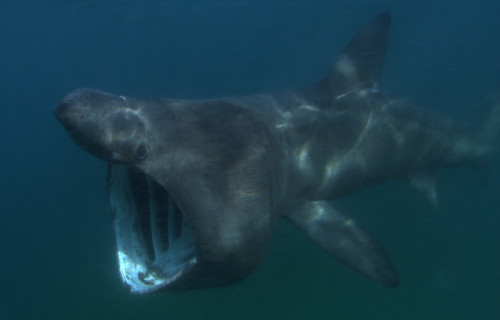
CCL: https://bit.ly/2Ttz0KS
Basking Shark Facts
- Next up on this listing of Incredible Sharks of the World is the gigantic one known simply as the Basking Shark.
- Perhaps most notably, the astounding Basking Shark ranks as the second largest of all known fish in the world. In point of fact, only the truly breathtaking Whale Shark exceeds this incredible shark in terms of sheer size. Also known as the Cetorhinus maximus, this animal, unlike the Whale Shark, faces a man-made, ongoing danger. That’s because it remains a commercially fished species in parts of its range.
- In addition, of further interest to some is the fact that this remarkable creature represents the only surviving member of its Family. In the mid 18th century, the bishop/botanist, Johan Ernst Gunnerus, became the first individual to officially describe the fascinating species. This surprising recognition occurred based on his observations of a single specimen. This sole individual he saw in the country of Norway.
- Quite unfortunately, the IUCN presently lists this magnificent creature as Endangered, on its Red List of Threatened Species. It holds this status due to the fact that its numbers have plummeted dramatically in the past century. This primarily occurred due to mans over exploitation of it. However, it now faces the additional threat of climate change. Sadly, no widely organized conservation efforts as yet exist.
Basking Shark Physical Description
Firstly, the magnificent Basking Shark attains a truly impressive physical size. Secondly, unlike many species throughout the world, this fish shows no discernible degree of sexual dimorphism. Mature specimens of both genders attain an average length of about 26 ft (7.9 m). But, exceptional specimens occasionally occur. The largest individual ever reliably studied measured 40.3 ft (12.27 m) in length, and weighed 36,000 lb (16, 329 kg).
Furthermore, it also possesses the elongated body shape typical of related species. Unlike the Great White Shark, which some people mistake it for, its gill slits nearly encircle its head. In coloring, though, individuals vary widely in appearance. This often depends on the region the individual inhabits. Typically, specimens display either a dark brown, black, or blue on the back portion of the body. Meanwhile, the front usually shows a dull white.
Incredibly, the liver of this amazing animal accounts for about 25% of its entire body weight. It runs the entire length of the abdomen. However, its mouth itself forms its most incredible and recognizable feature. That’s because this enormous cavity opens up to a remarkable width of more than 3 ft (1 m). This, in turn, has a lining of numerous rows of teeth. But, unlike predatory sharks, these teeth only average 0.2 in (5 mm) in length.
- Kingdom: Animalia
- Phylum: Chordata
- Class: Chondrichthyes
- Order: Lamniformes
- Family: Cetorhinidae
- Genus: Cetorhinus
- Species: C. maximus
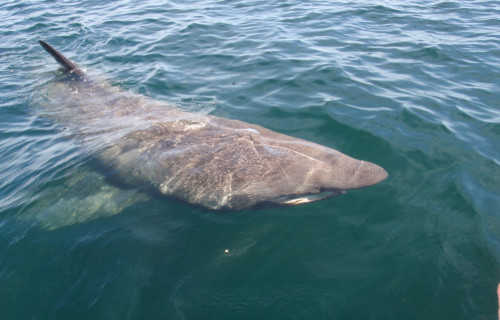
CCL: https://bit.ly/3clrqe0
Basking Shark Distribution, Habitat, and Ecology
Quite fortunately for it, the mesmerizing Basking Shark has historically inhabited a remarkably wide range. This endemic territory includes the Mediterranean Sea, the north and south portions of both the Atlantic and Pacific Oceans, and also the sea of Japan. Furthermore, the distinctive fish also appears near New Zealand, as well as off the southern coast of Australia.
Predominantly, the fabulous creature inhabits the pelagic zone, that areas consisting of open ocean. More specifically, it generally appears in waters with a depth ranging from 656 – 6,562 ft (200 – 2,000 m). This generally places it along the continental shelf in the area it appears. Despite this fact, though, individuals often can be seen moving at or near the surface of the water. In addition, it also sometimes ventures into bays for short periods of time.
The fabulous Basking Shark feeds entirely as a filter feeder. To that end, it spends much of its time swimming quite slowly, with its gigantic mouth gaping wide. The fish does this to capture the huge quantities of food it consumes, primarily consisting of plankton. Yet, it also consumes the smaller quantities of tiny crustaceans that it captures along with the plankton. Finally, researchers currently know very little about its reproductive biology.
Epaulette Shark
Epaulette Shark Facts
- The next of the astounding creatures chosen for inclusion in this article about Incredible Sharks of the World is the unique one named the Epaulette Shark.
- The descriptive term for this fish serves as the common name for an unusual variety of shark. Its scientific name, however, is the somewhat difficult to pronounce term of Hemiscyllium ocellatum. By either name, though, it’s a fascinating species.
- Originally, it bore a different, and slightly more pronounceable, official name. That term, assigned during its first scientific recognition, was Squalus ocellatus. The French naturalist Pierre Joseph Bonnaterre bestowed that initial title in 1778.
- It’s best known, though, for the astounding ability it evolved. This variety of shark literally, and frequently, walks across the ocean floor, or even dry land! The fish manages this locomotion by using its fins to undulate its way across the seabed.
- Fortunately, the population base of the marvelous Epaulette Shark appears to be both sufficient and comparatively stable. The IUCN, therefore, presently lists this marvel of Nature as Least Concern. That status appears on its Red List of Threatened Species.
- This amazing fish nevertheless faces at least some potential threats to its continued existence. Like every other living thing on the planet, climate change could pose a serious threat in the near future. For the moment, though, few other factors threaten it.
Epaulette Shark Physical Description
The visually surprising Epaulette Shark constitutes a mesmerizing species, in the opinions of some individuals. It does not, however, earn this distinction due to sheer size. That’s because this wonderful animal actually ranks as a very small variety of shark.
Individuals of both genders also attain an average length of between 27 – 35 in (70 – 90 cm). Exceptional specimens, though, grow to as much as 42.1 in (107 cm). Yet, unlike many related species, this fish does not display any noticeable degree of sexual dimorphism.
The body of the Epaulette Shark develops as quite slender, and relatively elongated. Its snout, meanwhile, appears rounded and very short in structure. It also possesses between 26 – 35 rows of teeth in its upper jaw, along with 21 – 32 rows of teeth within its lower jaw.
The most noteworthy feature is the one that’s the source of the common name. That’s the presence of a large black spot behind each pectoral fin, surrounded by a white ring. The rest of the body also displays a brownish to beige shade, with brown spots and bands.
- Kingdom: Animalia
- Phylum: Chordata
- Class: Chondrichthyes
- Order: Orectolobiformes
- Family: Hemiscylliidae
- Genus: Hemiscyllium
- Species: H. ocellatum
Epaulette Shark Distribution, Habitat, and Ecology
Sadly, the Epaulette Shark has one factor limiting its potential for successful competition with related species. That’s the fact that it only appears to live in a highly restricted portion of the globe. That range further consists of parts of the western Pacific Ocean.
More specifically, its only confirmed range extends from the northern coast of Australia to the southern shores of New Guinea. Unconfirmed reports, however, indicate the possibility that a small population may also exist around Sumatra, Malaysia, and the Solomon Islands.
Like many of the other small varieties, this particular shark evolved as a bottom-dwelling species. In its case, though, the creature rarely appears at depths greater than 131 ft (40 m). It also principally inhabits regions of coral reef, including the Great Barrier Reef.
Like virtually all known shark types, the small yet impressive Epaulette Shark evolved as a carnivore. Its own size, however, restricts its choices of prey. These mainly consist of various small fish and crustaceans. But, it also occasionally feeds on polychaete worms.
Regardless of its prey of choice at a given moment, it most commonly hunts during period of low tide. Apart from this, its greatest periods of activity typically occur at dusk and dawn. Its own predators, meanwhile, include other, larger sharks, and grouper.
Incredible Sharks of the World
We hope that you have been fascinated and enthralled by this article on Incredible Sharks of the World. These magnificent creatures have ruled the seas and oceans for many millions of years. In that time, few, if any, species have challenged their position.
But now, however, many of these incredible wonders of evolutionary processes find their very existence threatened. This lamentable situation occurs largely due to the actions of mankind. It is up to us to take steps to ensure their survival.
Check out our other articles on 7 Extraordinary Types of Ant, Earth’s Many Stunning Waterfalls, Wonderful Wild Cats of the World, 6 Mysterious Natural Phenomena
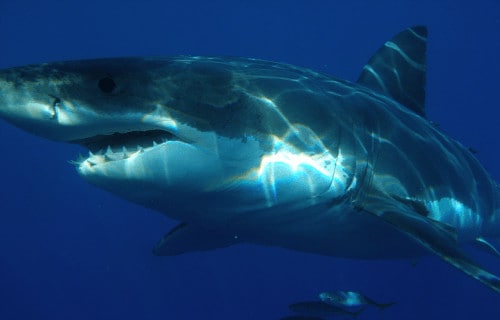
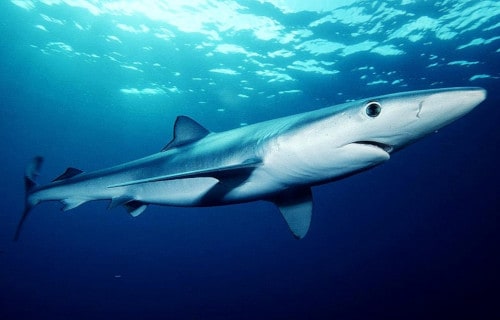
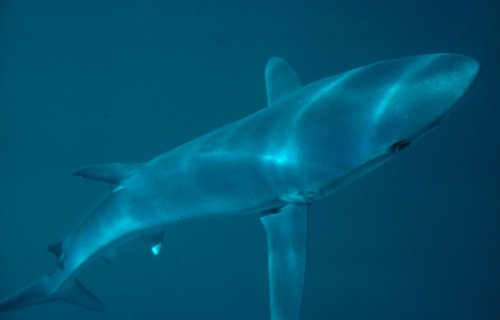

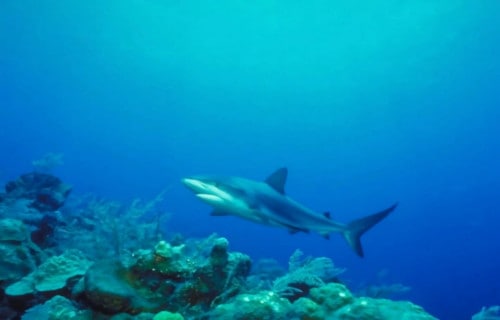
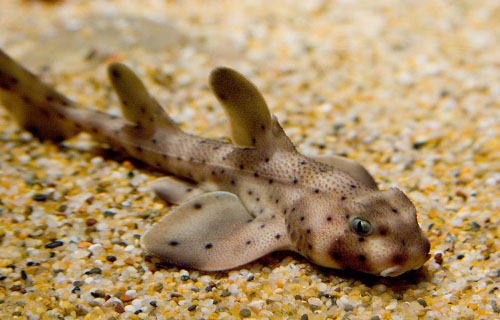
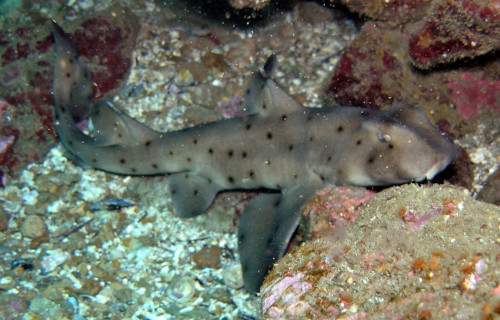
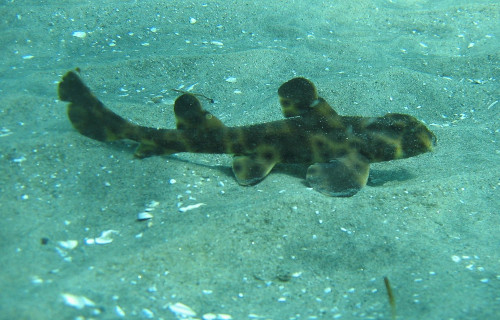
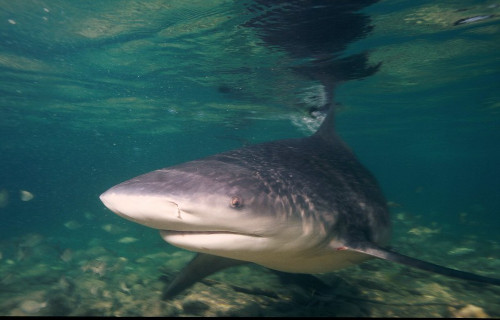
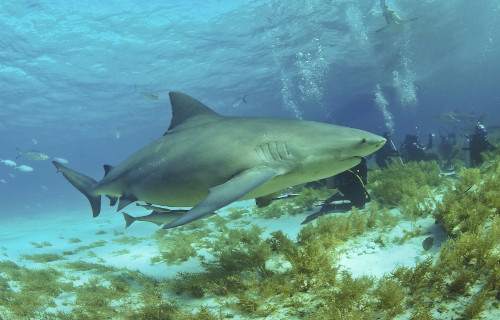
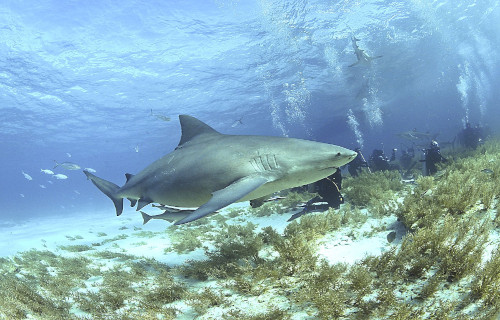
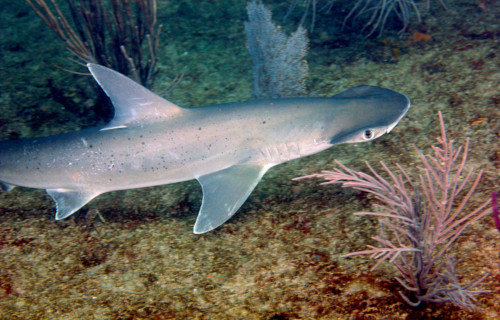

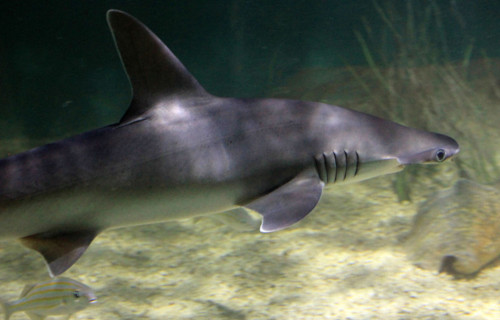
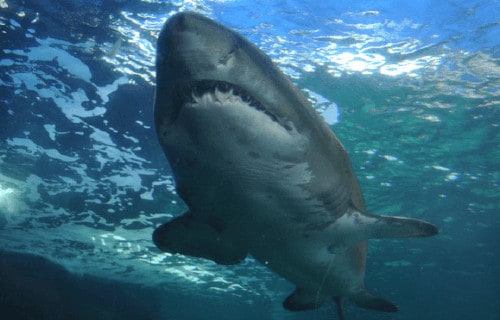
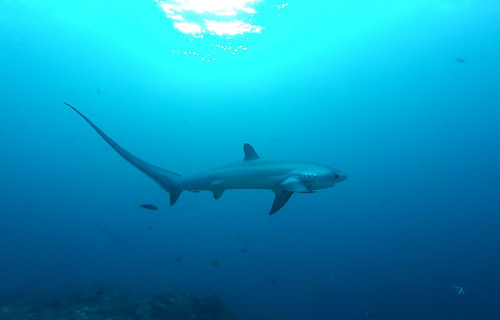

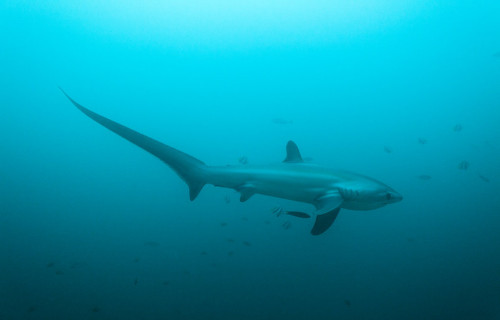
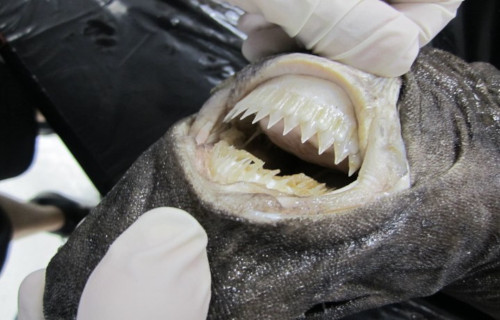
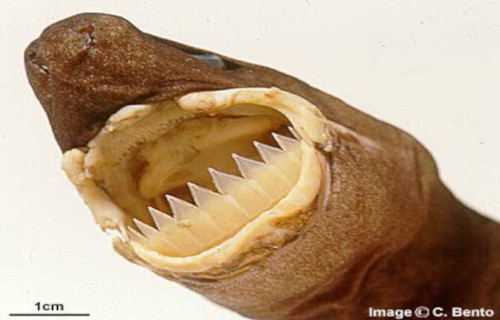
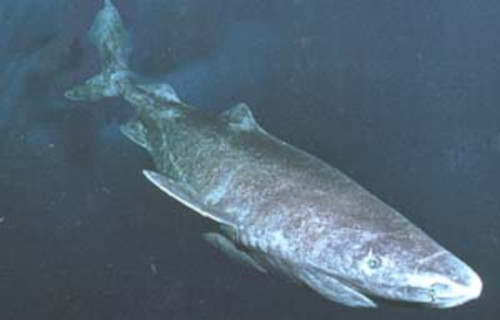
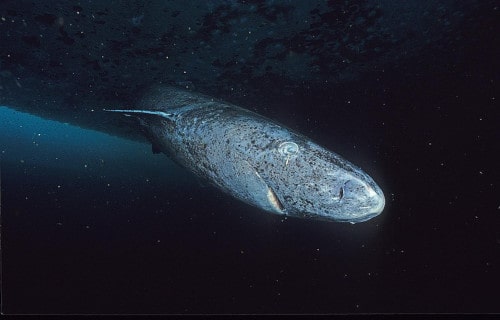

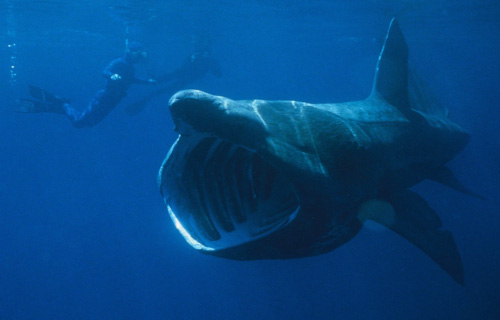
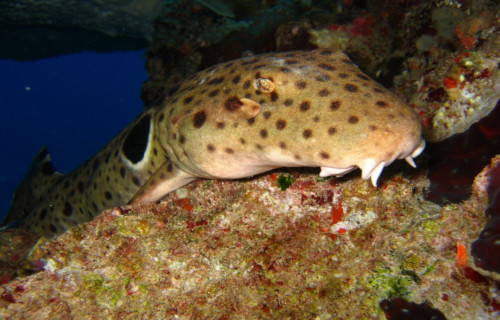
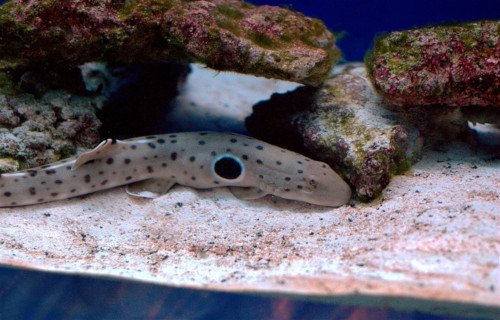
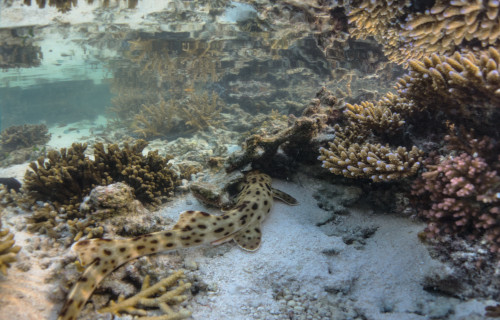









Leave a Reply